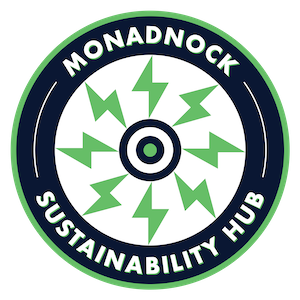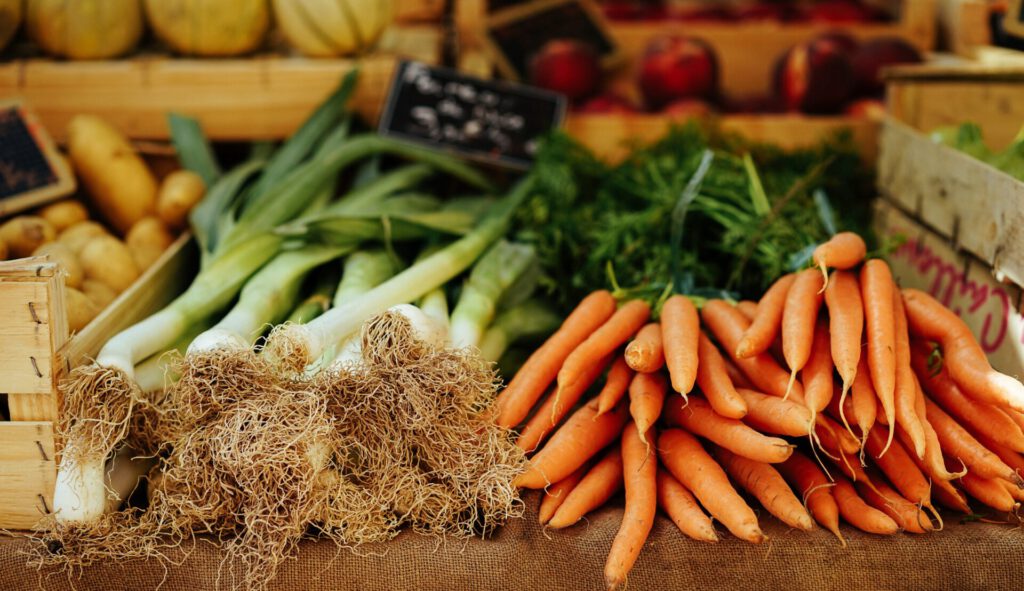By Peter Wotowiec
Originally Published in The Monadnock Shopper News, Green Monadnock column, Fall 2020.
I’d never seen anything like this. Sure, I know we rely on trucks arriving just in time to keep the grocery store shelves filled. Yes, I hear there is often no more than a three-day stockpile in the distribution warehouses. But staring down the recently bare aisles of my local grocery directly raised my concern about our food security!
Why isn’t the New England region more food self-sufficient? Forget the cross country trucks; let’s buy local, right? Why don’t our own farmers supply more of our food? Dreams of food self-sufficiency for New England are tempered by the reality of our land, seasonal climate and economics.
The early settlers became “Yankee traders” of necessity; exchanging labor, fur, timber and small farm surplus for tea, sugar, salt, sacks of grain and other essentials not produced on the homestead. Later, the railroads made available to New Englanders abundant, inexpensive grain and other crops grown in fertile Midwestern soils. Hardscrabble, hill farms began to decline as people bought food supplied from elsewhere. Abandoned fields grew up in pine forests.
The discovery of oil led to gas-powered transportation; eventually to 18 wheeled trucks and the interstate highway system. Today, lettuce from California or Mexico moves in refrigerated comfort across the country arriving in a few days at regional food distribution warehouses. There it is redirected to an unending supply train of trucks heading to local stores. This complex system is carefully managed by people and computer software to glean the utmost efficiency from the “just in time” supply process.
But complex systems can fail, right? How reliable is our food supply system when faced with chaotic events? Erratic weather and climate events, economic crisis, pandemic, and more are some of the stressors that today threaten this precariously balanced food supply chain. Will it improve in the future? We can’t count on that.
About ninety percent of our overall food supply is brought in from outside the region. To produce the ten percent of our food supply that is grown here, New England farmers use about two million acres to cultivate crops and raise livestock. Doing so uses less than five percent of the total land available in the six-state region.
Certainly, we could do better? Even though New England has not been blessed by abundant prime farmland there must be more land that could be put into production? After all, a century ago, our farmers had three times today’s acreage in crops and livestock. If more of our food could be grown here, we could really improve our food security in uncertain times.
Food Solutions New England, a collaborative six-state network of people, businesses and organizations, is asking these questions and working to create a more solid, sustainable and equitable regional food system. Their report, “50 By 60; A New England Food Vision “describes a future in which New England produces at least half of the region’s food – and no one goes hungry. It looks ahead to 2060 and sees farming and fishing as important regional economic forces; soils, forests and waterways cared for sustainably; healthy diets as a norm; and access to food valued as a basic human right.”
This compelling vision of our future food system calls for three times as much regional land in crops and pasture by 2060 while still maintaining a 70% forested landscape. This 2014 collaborative vision has since been continually refined by farmers, scientists, researchers and community food activists throughout New England and a further update is now underway. It is guided by four core values; all people have access to adequate and wholesome food; healthier eating patterns; environmental sustainability; and creation of jobs and thriving communities.
This is a powerful, detailed vision, but not a plan of action. It is meant to inspire; to provoke thought of better possibilities; to motivate us to come together to create a better food future rather than passively await what might happen.
For a more food secure future, New Englanders need action on;
- Farmland conservation for the long term.
- New farmer training, incentives and access to land.
- Farm-to-table lunch programs in schools and institutions
- More community gardens and farms
- Increased support for farmers markets
- New sustainable farming practices to conserve soil, nutrients and water.
- Access to grow and garden for every household.
So, plant the seeds and develop your growing skills. Join a community garden and share the produce with your neighbors. Ask food supply questions of local farmers and learn. Find out about farmland protection from the Monadnock Conservancy. Encourage our legislators to support improved food and farm policies.
In spirit, if not reality, we New Englanders really need to become farmers again. Don’t wait until the shelves are bare!
Sources
New England Food Policy; Building a Sustainable Food System American Farmland Trust et al : https://www.clf.org/publication/new-england-food-policy-building-sustainable-food-system/
50 by 60; A New England Food Vision Food Solutions New England : https://foodsolutionsne.org/a-new-england-food-vision/
Farmland Protection Monadnock Conservancy : https://www.monadnockconservancy.org/conserve/farmland-protection
Featured photo by Peter Wendt on Unsplash.
About the Author
Peter Wotowiec serves on the board of the Monadnock Sustainability Hub. Peter is a carpenter, farmer, community volunteer and active supporter of the many local eco-action groups. He resides along the Cold River in Langdon, New Hampshire.

